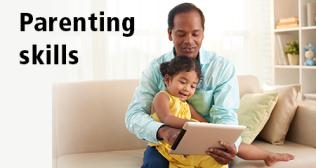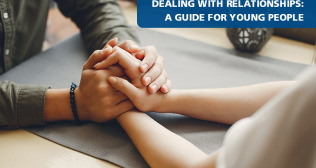
The Bullies, The Bullied & 5 Tips for Parents
"I saw a bunch of classmates running towards me as I heard my heartbeat race, and I embraced myself in a foetal position while they called me names and hit me on my head and left me wondering what I did for the third time in that week!" my 20-year-old client reminisced, "That made me feel I will always be rejected, and that cannot be changed!". After a brief pause, she continued, "Now that I look back, I think I was not assertive".
This thought of not being accepted by the environment can become a closely held belief even when we grow out of the environment. Our experiences as a child mould our beliefs about ourselves and the environment. We tend to attach the labels our bullies address us with to our identity. Feeling stressed, demotivated, helpless or even angry and irritable may be rooted in these childhood experiences contributing to our perception of the world.
Hitting, name-calling, and inappropriate and hurtful pranks are well-known prototypic bullying behaviours. Apart from these, less conventional forms of bullying include spreading rumours, leaking personal information, threatening to end friendships, intentionally creating hurdles in others' goals, and turning the group against the 'bullied'.
The Bullied
Being under or overweight, shy, timid, unassertive, belonging to a minority, transgender people, gay, lesbian, bisexual, children and adults with disabilities seem to stand at a more vulnerable part of society and report more occurrences of being bullied. Often, bullied children are so afraid of the bullies that they do not share their struggles with their families. However, poor coping with such adverse circumstances can lead to emotional and behavioural outbursts, which are loud enough for parents to check up on their little ones.
Behaviour may include bedwetting, refusal to go to school, truancy, temper tantrums when forced to attend school, trouble sleeping, withdrawal from social activities, being quieter than usual, a decline in academics or co-curricular performance or may engage in self-harm.
A myriad of emotions may be expressed, from aggression to numbness; from anxiety to indifference. One emotion, however, may be common in most children, the emotion of helplessness, accompanied by thoughts such as ‘nothing can be done’, along with the feeling of loneliness. These are only short-term and immediate reactions to bullying; the long-standing consequences may not be discernible years after the bullying has ended and grossly contribute to an individual's personality development.
The Bullies
Usually, the children who play the role of bullies fail to have healthy interactions with peers because of being devoid of adequate social skills. Considering the lack of social skills and observational learning at home, these children learn aggression as a way of interaction. Often bullies also see this as a method of asserting dominance and control over the environment, which may not be possible otherwise. When children fail to acquire (and parents fail to model) adequate restraint in behaviour with others, we see aggressive, inappropriate and maladaptive patterns of interaction with the environment at a very young age. Bullies also tend to establish strained relationships with parents or peers and pivot their behaviours in the direction that rewards attention.
What should parents do?
A house built on sand will collapse like a house of cards with a flurry of breeze. Childhood years form the foundation of adulthood. Being bullied creates a sense of mistrust in the environment or an inability to protect oneself, resulting in withdrawal or isolation with a heap of insecurities. Several things can be done to identify and prevent bullying, which include,
Here are some tips for parents on how to prevent bullying from taking place:
- Artwork - often, young children might not be the best at communication, but they can use colours. Regular artwork can indicate the child's emotions and peer dynamics at home and school.
- Spending time - having quality time with children is essential. Creating a safe space for children is vital for them to open up.
- Bystander effect - in other words, the observers of bullying. Positive attention and importance given to the bullies by the bystanders by viewing them as powerful or entertaining play a pivotal role in rewarding the act of bullying. Educating children about the role of bystanders and what can be done to stop it may guide children to help others who are frequently bullied.
- Indirect questions - to smoothen the ridges of communication with children. Children may respond well to questions like, "if you had a superpower, what would you change in your life?". Such questions might open the child's world to our eyes, which can help identify their thoughts and emotions when they find it difficult to vocalise.
- Social skills - Being aware of the child's current interaction skills and helping them develop it can uproot the issue. Teaching assertiveness and healthier communication methods can help children control their situations.
Given how common bullying is and how colossal the effect it causes, we must act within our control boundaries and contribute to our children's well-being. Instilling children with a sense of empathy, understanding and respect for one another is the need for the hour, which will create sturdy foundations for our houses which can stand the most turbulent storms.
Author
Kritika Zutshi
Clinical Psychologist



















